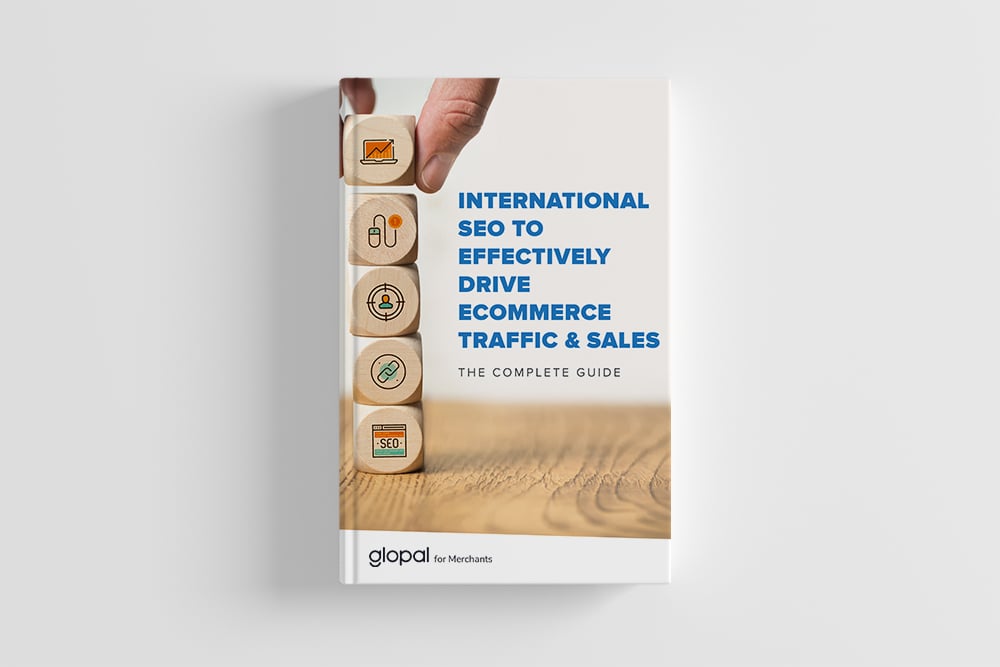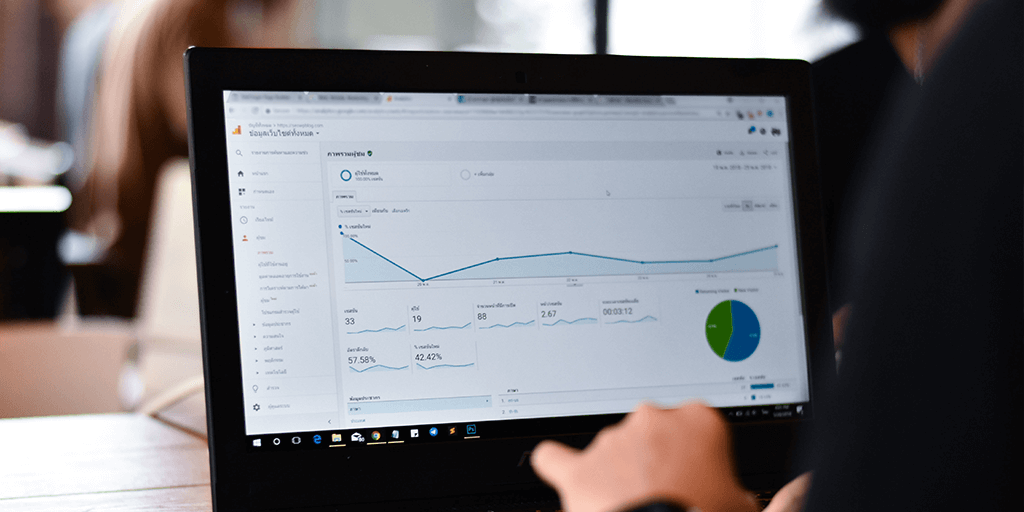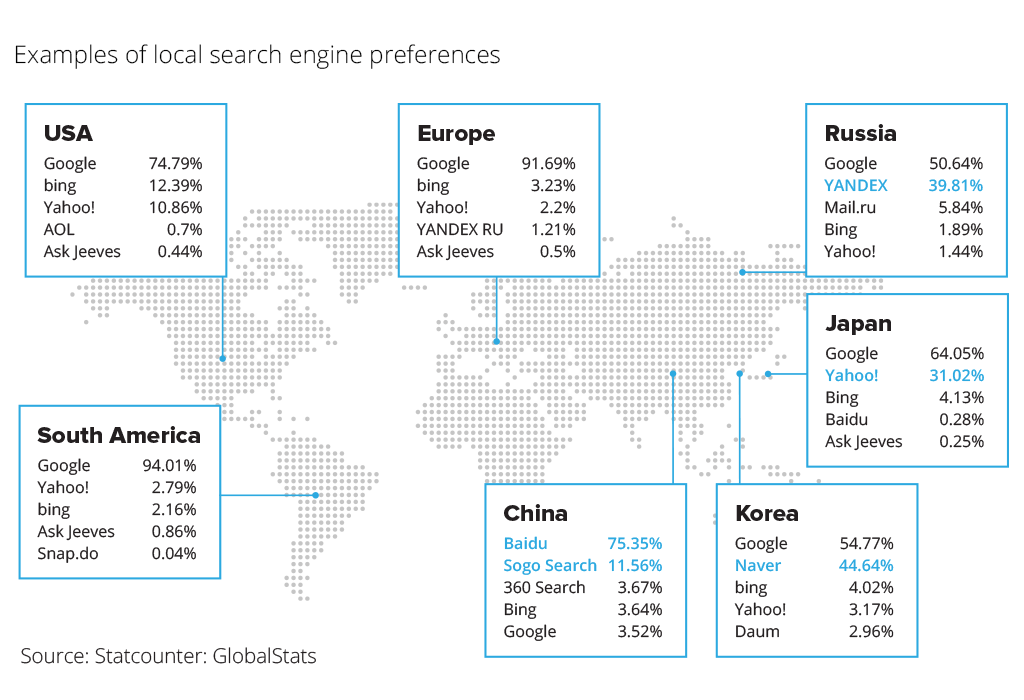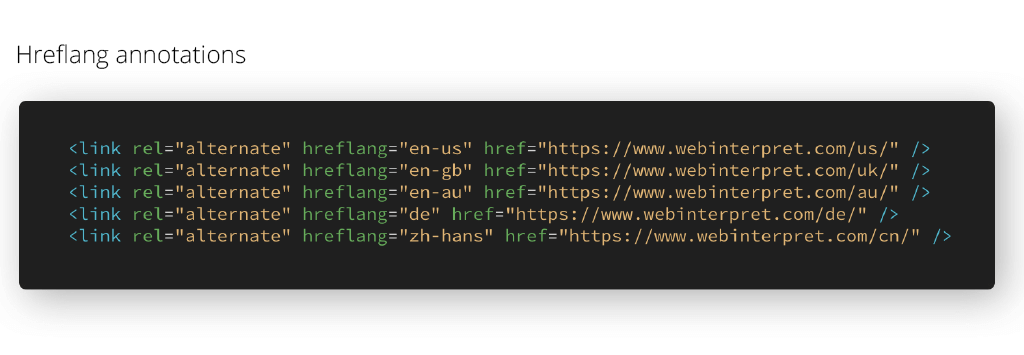International SEO should rank higher. At least in the global sales strategies of many ecommerce sellers.
Approximately 40% of all global ecommerce traffic comes from search and over 90% of all online experiences begin with a search engine. The mere number of daily Google searches is impressive: 3,700,538,250 (as of 16 October, 2019, 1 PM CET, according to Internet Live Stats).
As a result, every day millions of worldwide shoppers may be looking for your product. However, finding it may be close to impossible if your content hasn’t been localized and/or optimized for international SEO.
In this article you’ll read about how to get started with international SEO for your ecommerce store. You’ll also learn how to identify your international sales and organic search potential.
Additionally, we’ll give you access to our all-inclusive guidebook “International SEO to effectively drive ecommerce traffic & sales”.

Interested in driving international traffic and conversions to your online store? Download our FREE ecommerce guide on international SEO for ecommerce.
International SEO for ecommerce
International SEO activities help search engines better understand what countries and languages the website’s content is for. This should result in the improved quality of search results so specific audiences see the most relevant content.
For example, online shoppers from France should land on ecommerce sites in the French language and with product prices listed in euro.
Mastering global SEO techniques should increase your global online presence and maximize your conversion rates. Effective & efficient planning of your international SEO strategy is fundamental.
It may seem overwhelming at first, but it’s much simpler if you start at the beginning and improve your international SEO step-by-step.
Start simple by identifying potential for each international market
An international SEO process should start with initial research to:
- Validate the starting point
- Set targets and prioritize
- Identify potential for each international market.
The starting point is your current international organic search status: visibility, traffic and conversion rates. You can find some useful data in Google Analytics and the “Geo” reports under “Audience” as well as Google Search Console and the “Search Queries” reports where you can filter by location.

The starting point is your current international organic search status: visibility, traffic and conversion rates. To find out more, download our complete international SEO guide.
Understanding your metrics is of utmost importance. Therefore, you should measure your website’s traffic, its relevance to international markets (foreign visits and conversions) and your current position in search engines in other countries. Then check the volume of your store’s keyword searches in different locations and languages.
Devising international SEO strategy in ecommerce
When devising international SEO strategy, it’s essential to understand:
- Which countries/languages are already providing organic search visibility and traffic
- The volume and trend over time per country/language
- The keywords and pages that attracted the search visibility and traffic for each of the top identified international markets.
- The organic search CTR and conversion rate of the visitors coming from each of the top international markets
- The conversion volume and trend coming from each of these international markets.
Answering the questions above helps identify the seller’s current top international countries/languages. Additionally, it makes it easier to understand the behavior of international visitors per country/language.
Prioritizing markets with a relatively high or medium organic search visibility that show a positive trend or above-quality conversions may be the optimal way to proceed.
One of the things some international online sellers overlook are local search engine preferences. However, the impact of this factor can be enormous so take time to do some research and adjust your SEO activities accordingly.

For instance, to expand organically in mainland China, Google isn’t really an option as it’s blocked there. Further, each search engine has different criteria and the SEO strategy optimal for France may not work in China.
Google may win 90% market share in most European countries, but it’s not a given everywhere.
Identifying international organic search potential: keyword analysis
Keyword research helps identify the potential of the top countries and language markets you’ve identified.
Collect the following data for individual markets:
- Relevant keywords & phrases your international visitors use as queries to search for your products, services or business
- Organic search volume for these keywords per country
- Level of competition of the keywords per country
- Your current rankings for these keywords in the target markets.
You can start with the keywords that are already bringing organic search traffic to your site and complete your keyword list by using tools, such as Google Keyword Planner, Ahref, SEMRush, SimilarWeb or Moz.
Try to follow the general best practices and ensure that your page has the keyword in strategic locations, such as product descriptions, titles, URLs, image file names, alt tags, etc.
In the case of the same language, consider cultural and location differences. A word can be a deal maker or breaker. For example, according to our research, items with the word “fancy dress” had a 250% bigger chance of being sold in the UK compared with items containing the word “costume”.

Finally, consider keywords your main competitors go for. Check if they have a higher Domain Authority (DA) than you. If that’s the case, you may want to focus on other keywords as competing against them will be difficult. You’ll also need better optimized and richer content and more backlinks. You can consider using a local agency to help with getting backlinks.
Targeting global ecommerce markets
The countries prioritized in your international SEO strategy should have enough organic search volume of relevant and reasonably competitive keywords. If there’s not enough organic search volume to target a specific country, targeting the language may be the option. You can start with countries that speak the same language and use equivalent keywords.
It’s crucial to adapt the content to the target country to rank your site higher. Use the localized version of the language (but avoid using Google translate) and local currencies and payment methods.
Further, use localized URLs for each language version of your site to raise your rankings. Localized URLs send clear signals to search engines so they can determine the site’s location and relevance compared to others in that country.
To only show the correct language version based on the searcher’s location, Google suggests using hreflang annotations.

Improve your international SEO with Glopal
Webinterpret helps you optimize your international SEO and drive more international traffic to your store. By translating and localizing your store content, we enable international search engines to index your content locally to your global buyers, maximizing your visibility and making the best use of international SEO.
We improve your organic international traffic by localizing and optimizing your entire store’s SEO structure, including meta title and description translation, H1 tags, H2 tags, image alt tags and hreflang attributes.
Contact us to find out how you can benefit from this service.
For more information on hreflang language, multilingual SEO actions & language, geo and language targeting, choosing international domain structure and much more, download our comprehensive guidebook (link below).
-jpg.jpeg)
Interested in driving international traffic and conversions to your online store? Download our FREE ecommerce guide on international SEO for ecommerce.







